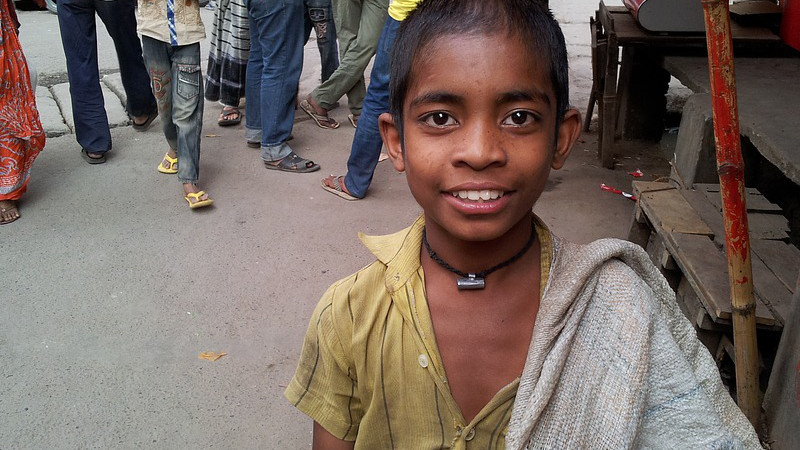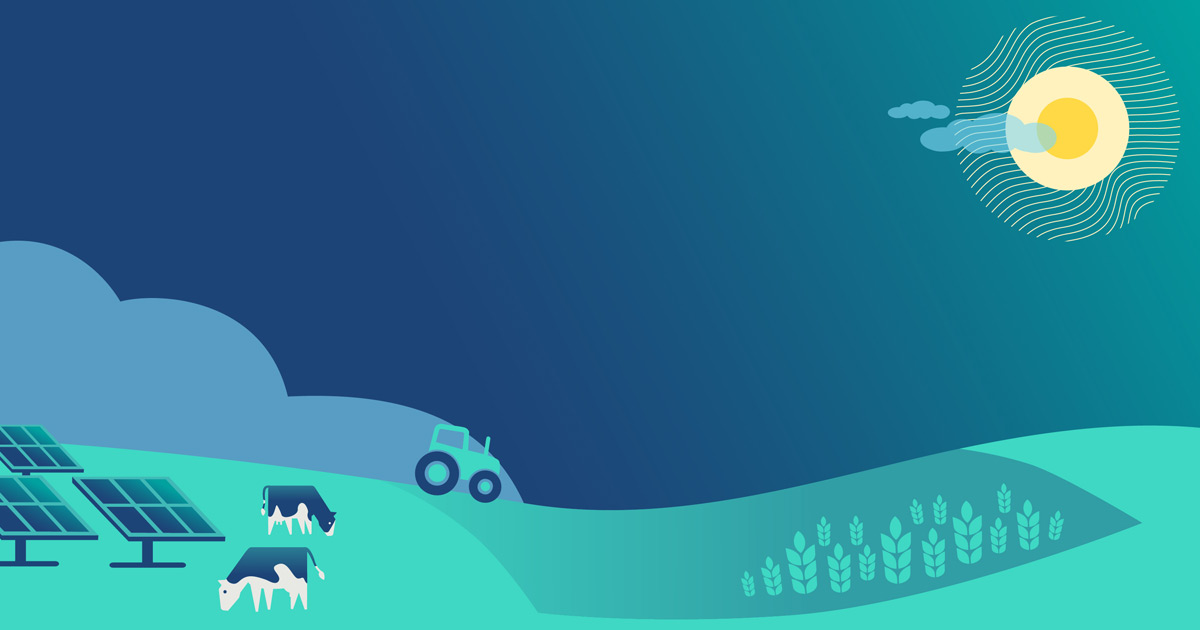Governance Failure And Food Crisis: How Bangladesh’s Mismanagement Is Starving Millions – OpEd – Eurasia Review

Report on the Food Insecurity Crisis in Bangladesh and its Implications for the Sustainable Development Goals
Executive Summary
Bangladesh is facing a significant food insecurity crisis, projected to affect approximately 16 million people by the end of 2025. This situation presents a direct challenge to the nation’s progress towards several Sustainable Development Goals (SDGs), most notably SDG 2 (Zero Hunger). The crisis is driven by a confluence of environmental, economic, and governance-related factors, including climate-induced disasters, severe economic distress, and failures in institutional capacity. The disproportionate impact on vulnerable populations, including children and Rohingya refugees, further undermines SDG 3 (Good Health and Well-being) and SDG 10 (Reduced Inequalities). This report analyzes the scale of the crisis, its primary causes, and its direct conflict with Bangladesh’s commitments to the 2030 Agenda for Sustainable Development.
Analysis of the Crisis in the Context of the SDGs
Scale of Food Insecurity: A Direct Threat to SDG 2 (Zero Hunger)
The current emergency severely compromises efforts to achieve food security, improve nutrition, and end hunger. According to data from the Ministry of Food and the Integrated Food Security Phase Classification (IPC), the crisis is characterized by the following:
- Approximately 16 million people are projected to face Phase 3 (Crisis) food shortages by December 2025.
- An estimated 1.6 million children are expected to suffer from acute malnutrition, a critical failure in achieving the targets of SDG 2 and SDG 3 (Good Health and Well-being).
- The crisis is concentrated in 13 disaster-prone districts, with Cox’s Bazar being the most affected region.
- Among the Rohingya refugee population in Cox’s Bazar and Bhasan Char, over 40% face crisis or emergency conditions, highlighting a severe challenge to SDG 10 (Reduced Inequalities).
Causal Factors Undermining Sustainable Development
The food security crisis stems from interconnected failures that directly contravene the principles of sustainable development.
- Governance and Institutional Weakness (SDG 16: Peace, Justice and Strong Institutions): Administrative failures have led to ineffective social protection programs, unchecked market syndicates, and an inability to contain inflation. This lack of effective and accountable institutions has weakened the state’s capacity to protect its citizens from hunger.
- Climate Vulnerability and Environmental Shocks (SDG 13: Climate Action): Recurrent floods and cyclones, such as Cyclone Remal, are major drivers of the crisis. Inadequate disaster preparedness and a failure to build climate resilience have left agricultural systems and supply chains highly vulnerable, directly impeding progress on climate action and adaptation.
- Economic Distress (SDG 1: No Poverty & SDG 8: Decent Work and Economic Growth): Soaring inflation and dwindling foreign reserves have diminished the purchasing power of low-income households, pushing them further into poverty and making basic food staples unaffordable. This economic instability reverses gains made towards poverty eradication.
- Breakdown in Regional Cooperation (SDG 17: Partnerships for the Goals): Rising political tensions and anti-India sentiment have disrupted vital food import routes, particularly for essential commodities like rice. This failure to maintain and leverage regional partnerships has exacerbated food scarcity and price volatility, demonstrating a critical lapse in the collaborative spirit required to achieve the SDGs.
Statistical Overview and Projections
Key Data Points and Trends
- Affected Population: Between May and December 2025, 17% of the population across 36 districts will experience food insecurity.
- Impact on Vulnerable Groups:
- 1.6 million children (aged 6–59 months) will suffer from acute malnutrition.
- Approximately 117,000 pregnant and breastfeeding women are at risk of severe malnutrition.
- Geographic Epicentre: In Cox’s Bazar, including the Rohingya camps, 30–40% of the population is projected to be in crisis or emergency phases.
- Primary Drivers: The crisis is attributed to the 2024 floods, Cyclone Remal, economic recession, reduced humanitarian funding, and systemic breakdowns in supply chains.
Outlook and Recommendations for SDG Alignment
A Prolonged Emergency Threatening National Development
The convergence of governance failures, climate fragility, and economic instability risks entrenching the food crisis, which threatens not only nutritional outcomes but also social cohesion and economic recovery. To avert a humanitarian catastrophe and realign with the 2030 Agenda, immediate and strategic interventions are required.
Strategic Recommendations
- Strengthen Governance for Food Security (SDG 16): Implement transparent and robust market regulation to control price volatility and dismantle market syndicates. Enhance the efficiency and reach of social protection programs to ensure they support the most vulnerable populations.
- Invest in Climate Adaptation and Resilience (SDG 13): Bolster national strategies for disaster preparedness and invest in climate-resilient agriculture to mitigate the impact of future environmental shocks on food production and supply chains.
- Restore Regional Partnerships (SDG 17): Pursue pragmatic diplomacy, particularly with India, to stabilize food import channels and leverage regional mechanisms for disaster response and food reserve management.
- Targeted Nutritional and Health Interventions (SDG 2 & SDG 3): Prioritize and allocate sufficient resources for nutrition and food programs targeting children, pregnant and breastfeeding women, and refugee communities to address acute malnutrition and prevent long-term health consequences.
Analysis of Sustainable Development Goals in the Article
1. Which SDGs are addressed or connected to the issues highlighted in the article?
- SDG 2: Zero Hunger: This is the central theme of the article, which details a “grave food insecurity crisis” in Bangladesh, focusing on hunger, food shortages, and acute malnutrition, particularly among children and vulnerable populations like Rohingya refugees.
- SDG 1: No Poverty: The article connects the food crisis to economic distress, soaring inflation, and the inability of low-income households to afford basic staples, highlighting how economic hardship exacerbates hunger and vulnerability.
- SDG 13: Climate Action: The article explicitly identifies “environmental shocks—frequent floods and cyclones” and “climate-driven shocks” as primary causes of the crisis, linking climate-related disasters directly to food insecurity and the need for disaster preparedness and adaptation.
- SDG 16: Peace, Justice and Strong Institutions: The text heavily criticizes “systemic governance failures,” “administrative failure,” “weak enforcement,” “ineffective social-protection programmes,” and “policy paralysis” as root causes of the crisis, pointing to a failure of institutions to protect citizens.
- SDG 17: Partnerships for the Goals: The article discusses how “deepening political turbulence and rising anti-India sentiment have disrupted vital bilateral cooperation,” specifically obstructing food import routes and regional trade, demonstrating the critical role of international partnerships in ensuring food security.
2. What specific targets under those SDGs can be identified based on the article’s content?
-
SDG 2: Zero Hunger
- Target 2.1: End hunger and ensure access to safe, nutritious, and sufficient food. The article directly addresses this by stating that “roughly 16 million people” will face “Phase 3 (Crisis) food shortages” and that “access to basic staples has narrowed sharply.”
- Target 2.2: End all forms of malnutrition. This is explicitly mentioned with the projection that “1.6 million children are projected to be acutely malnourished” and “about 117,000 pregnant and breastfeeding women could experience severe malnutrition.”
-
SDG 1: No Poverty
- Target 1.5: Build the resilience of the poor and vulnerable to climate-related extreme events and other shocks. The article highlights the vulnerability of people in “13 disaster-prone districts” to “frequent floods and cyclones” and economic shocks, exposing a lack of resilience.
-
SDG 13: Climate Action
- Target 13.1: Strengthen resilience and adaptive capacity to climate-related hazards. The article criticizes “Bangladesh’s inability to strengthen disaster preparedness” and calls for “investment in climate adaptation” to manage shocks like “the 2024 floods, Cyclone Remal.”
-
SDG 16: Peace, Justice and Strong Institutions
- Target 16.6: Develop effective, accountable and transparent institutions. The article points to a failure to meet this target by describing “governance collapse,” “misgovernance,” “ineffective social-protection programmes,” and the need for “transparent governance.”
-
SDG 17: Partnerships for the Goals
- Target 17.16: Enhance the global partnership for sustainable development. The article illustrates a setback in this area, noting how the “breakdown in bilateral cooperation” with India has disrupted food supply chains and undermined Bangladesh’s ability to “harness regional partnerships.”
3. Are there any indicators mentioned or implied in the article that can be used to measure progress towards the identified targets?
-
For SDG 2 (Zero Hunger):
- Indicator 2.1.2 (Prevalence of moderate or severe food insecurity): The article provides a direct measure for this by citing the UN’s Integrated Food Security Phase Classification (IPC), stating that “about 16 million people will face Phase 3 (Crisis) food shortages.” It also specifies prevalence in certain areas, such as “30 per cent of residents are food-insecure” in Ukhia and Teknaf.
- Indicator 2.2.2 (Prevalence of malnutrition – wasting): The article provides a clear quantitative measure related to this indicator by stating, “1.6 million children are projected to be acutely malnourished.” Acute malnutrition is a direct reference to wasting.
-
For SDG 1 (No Poverty) & SDG 13 (Climate Action):
- Implied Indicator for Target 1.5 & 13.1 (Number of people affected by disasters): While not a formal SDG indicator, the article provides data that measures vulnerability and lack of resilience. It mentions that the crisis is “concentrated across 13 disaster-prone districts” and lists “the 2024 floods, Cyclone Remal” as key drivers, implying that tracking the number of people affected by such events is a key metric.
-
For SDG 16 (Peace, Justice and Strong Institutions):
- Implied Indicator for Target 16.6 (Government effectiveness): The article implies a negative trend in government effectiveness through qualitative descriptions such as “governance collapse,” “administrative failure,” “policy paralysis,” and Bangladesh’s slip “to the world’s fourth-most food-insecure nation.” Progress would be measured by the reversal of these conditions.
-
For SDG 17 (Partnerships for the Goals):
- Implied Indicator for Target 17.16 (Trade and cooperation stability): The article implies a negative indicator by describing the “disruption” of “food import channels” and the “suspension of Indian rice imports.” A positive indicator would be the volume and stability of essential food imports through regional cooperation.
4. Summary Table of SDGs, Targets, and Indicators
| SDGs | Targets | Indicators Identified in the Article |
|---|---|---|
| SDG 2: Zero Hunger | 2.1: End hunger and ensure access to food. 2.2: End all forms of malnutrition. |
– Number of people in food crisis (16 million in Phase 3 IPC). – Percentage of food-insecure population in specific regions (30-40% in Cox’s Bazar). – Number of acutely malnourished children (1.6 million). – Number of malnourished pregnant and breastfeeding women (117,000). |
| SDG 1: No Poverty | 1.5: Build resilience of the poor to climate, economic, and social shocks. | – Number of disaster-prone districts affected (13). – Impact of economic shocks (soaring inflation) on low-income households. |
| SDG 13: Climate Action | 13.1: Strengthen resilience and adaptive capacity to climate-related hazards. | – Mention of specific climate shocks (2024 floods, Cyclone Remal) as key drivers. – Qualitative assessment of the “inability to strengthen disaster preparedness.” |
| SDG 16: Peace, Justice and Strong Institutions | 16.6: Develop effective, accountable and transparent institutions. | – Qualitative descriptions of institutional failure (“governance collapse,” “misgovernance,” “policy paralysis”). – Ineffectiveness of social protection programs. |
| SDG 17: Partnerships for the Goals | 17.16: Enhance the global partnership for sustainable development. | – Disruption of bilateral cooperation and food import routes with India. – Suspension of key imports (e.g., Indian rice). |
Source: eurasiareview.com
What is Your Reaction?
 Like
0
Like
0
 Dislike
0
Dislike
0
 Love
0
Love
0
 Funny
0
Funny
0
 Angry
0
Angry
0
 Sad
0
Sad
0
 Wow
0
Wow
0




















































.jpg.webp?itok=0ZsAnae9#)


























